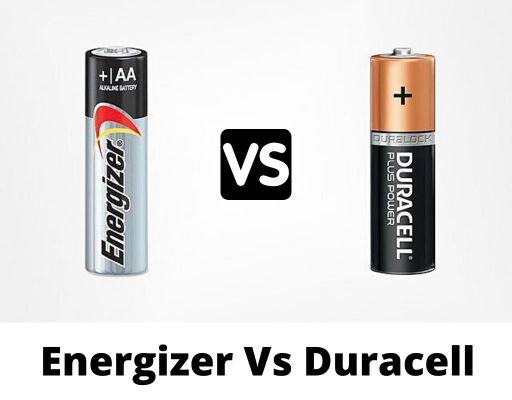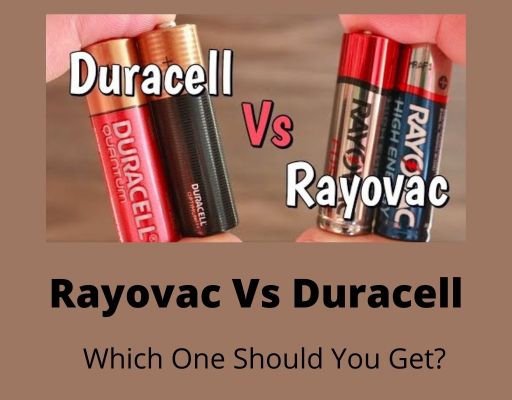Both the PowerOwl and Eneloop has a good reputation in the battery industry. But which of these batteries, however, is best for you? When is it OK to choose one over the other?
The 2,800mAh energy capacity of the PowerOwl rechargeable AA batteries is rather astounding. Furthermore, these batteries may be recharged up to 1,200 times. Whereas Eneloop is a pre-charged, long-lasting, energy- and money-saving, reusable rechargeable battery that can be charged and drained up to 2100 times.
I’ll go over everything you need to learn about the distinctions and similarities between a PowerOwl and an Eneloop battery in this article. So take a deep breath and read the entire article.
What Is PowerOwl?
PowerOwl is an environmentally clean rechargeable battery, containing no mercury, cadmium, or lead, and causing no pollution in the environment.
They also offer exceptional charge and discharge performance, with up to 70% charge retention after 3 years of non-use.
Benefits of PowerOwl
- It can work in temperatures as low as -4 degrees Fahrenheit.
- Impact and abrasion-resistant performance in a variety of temperatures.
- The price is reasonable.
- Rechargeable up to 1,200 times.
- Self-discharge is low.
What Is Eneloop?
Eneloop batteries are NiMH batteries that may be recharged. They’re known for having incredibly low self-discharge properties.
This implies they can hold a charge for longer than any other NiMH or NiCD rechargeable battery. Eneloop was created with the idea of long-term sustainability and environmental stewardship in mind.
Benefits of Eneloop
- Can be recharged up to 2100 times.
- After ten years, they can retain up to 70% of their charge.
- Ni-MH pre-charged rechargeable battery.
- With no memory effect, it is safe to recharge even while partly exhausted.
- When not in use, it retains 85% of its charge for up to a year.
What Are the Differences Between PowerOwl Vs Eneloop Battery?
There are several key differences between a PowerOwl and an Eneloop battery. Let’s take a closer look at these distinctions.
PowerOwl VS Eneloop Battery
| Features | PowerOwl Battery | Eneloop Battery |
| Charging Time | 10 hours | 1.5 to 3 hours |
| Battery Cell Composition | NiMH and NiCD | NiMH |
| Recharge Count | Up to 1200 times | Up to 2100 times |
| Self-Discharge | 70% up to 3 years | 70% up to 10 years |
| Pre Charge State | 20% pre-charged without solar power | Pre-charged using solar power |
| Low-Temperature Performance | Can perform well usually up to -4 degrees | Give outstanding performance low temperatures (–4°F) |
| Memory Effect | Yes | No |
Key Factors to Consider Before Choosing Between PowerOwl and Eneloop Battery
Although most rechargeable batteries appear to be physically identical based on their aesthetic appearances, their efficiency is vastly different. There are a few aspects that can assist you to determine if the product is perfect for you, and I’ll go through the most crucial ones below. Estimated Capacity: The energy capacity of rechargeable batteries is expressed in milliamp hours, or mAh. The greater the energy level, the more should last or the greater the amount of energy accessible in a short time.
Recharge Cycle
After continuous usage, rechargeable batteries will discharge, and a recharge cycle is simply a method of charging and discharging a rechargeable battery.
Charge cycles are often measured by the number of times they can be charged before they lose their ability to recharge.
Size
In batteries, size certainly matters, and battery size is determined by letters. D, C, AA, AAA, and AAAA are the most common battery sizes. The largest size is size D, preceded by size C. As a general rule, the more letters A there are, the better. As you can see, the smaller the battery, the better.
Type
There are various types of rechargeable batteries available. Their chemical structure is frequently used to classify them. Lithium-ion polymer (LiPo), lead-acid, nickel-metal hydride (NiMH), nickel-cadmium (NiCd), lithium-ion (Li-ion), and rechargeable alkaline batteries are some of the options.
Retention of Capacity
The quantity of energy retained over months or years is commonly used to characterize this. Because capacity retention varies substantially by brand, this is one feature that distinguishes one brand from the others.
It’s simple to choose the best rechargeable batteries, such as the Panasonic Eneloop AA, or the PowerOwl, which have the maximum capacity rating and a super-extended energy-retention potential.
However, the finest rechargeable batteries are not necessarily the most appropriate or appropriate for the purpose for which they are intended.
Should I Choose PowerOwl Battery Over Eneloop Battery?
The Panasonic Eneloop AAA Rechargeable Batteries performed admirably in its roundup of “The Best Rechargeable AA and AAA Batteries” earning the title of “Top Pick,” indicating that it is a product worth investigating.
The PowerOwl D Rechargeable Batteries was included in a list of the “Best Rechargeable AA Batteries of 2022” by a source that does credible hands-on testing. It did not, however, make any of the top ten lists.
So, according to expert ratings from Slant, Eneloop batteries are rated higher than the PowerOwl ones.
How Long Does It Take to Charge a Rechargeable Battery?
It depends on the capacity of the battery.
The PowerOwl High-Capacity AAA 2800mAh batteries usually take up to 10 hours to fully recharge. The Eneloop batteries usually need 1.5 to 3 hours to recharge fully.
The smart charge feature monitors the charging conditions of the batteries, as well as the temperatures of both the batteries and the charger. This enables the charger to charge each battery.
Can I Use NiMH Batteries with Alkaline Batteries?
No. Do not mix and match rechargeable and alkaline batteries. The most important thing to remember is that gadgets that employ numerous batteries, only use matching cells.
These batteries should be of the same capacity, brand, and model, and be used in the same way.
Frequently Asked Questions (FAQs):
What Types Of Batteries Does PowerOwl Sell?
PowerOwl has a wide range of batteries. But the most famous ones are the AA (2800mAh), AAA (1000mAh), C (5000mAh), D (10000mAh), and 9V (600mAh) batteries. All of these are Ni-MH batteries except the 9V ones. The 9V batteries are Lithium-ion.
Is a charger included with all rechargeable batteries?
Although not all rechargeable batteries come with a charger, many do. Before you buy, double-check the product information to be sure you know exactly what you’re getting.
What Is A Reasonable Recharge Limit?
With most batteries giving at least 500 recharge cycles, there are no criteria for what constitutes a “good” recharge limit.
What’s The Difference Between Single-Use And Rechargeable Batteries?
Single-use batteries, also known as primary batteries, which should be appropriately disposed of once they have been depleted. Whereas from 500 to 1000 rechargeable cycles or more, rechargeable batteries can be used several times.
What Kinds Of Devices Can You Run On Rechargeable Batteries?
High-drain systems or those that require a lot of power for a short amount of time are the best candidates for rechargeable batteries. Wireless gaming controllers, digital cameras, Bluetooth gadgets, and portable video games are all examples.
Verdict
All batteries are created differently, and there is always one that outperforms the others. But, like everything else, they’re not ideal in every manner, and defects may be found in every product.
With a reduced recharge count and a fair price, PowerOwl is a good choice. Eneloop, on the other hand, has a greater recharge count; therefore it will cost you a little more.
All you have to do now is weigh the benefits and drawbacks provided above to make a more informed selection of the best battery for your needs.
Related Posts:
- Differences Between Duracell Optimum Vs Energizer Lithium
- Optima Yellow Top Vs Red Top Batteries: The Ultimate Comparison
- Differences Between Interstate Vs DieHard Battery: Which one is better?
- Rayovac Ultra Pro Vs High Energy Batteries: The Ultimate Comparison
- Duracell Vs Eveready Battery: The Ultimate Comparison



